
Parcel and cargo delivery company FedEx (NYSE: FDX) announced better-than-expected revenue in Q3 CY2025, with sales up 3.1% year on year to $22.24 billion. Its non-GAAP profit of $3.83 per share was 5.8% above analysts’ consensus estimates.
Is now the time to buy FedEx? Find out by accessing our full research report, it’s free.
FedEx (FDX) Q3 CY2025 Highlights:
- Revenue: $22.24 billion vs analyst estimates of $21.66 billion (3.1% year-on-year growth, 2.7% beat)
- Adjusted EPS: $3.83 vs analyst estimates of $3.62 (5.8% beat)
- Adjusted EPS guidance for the full year is $18.10 at the midpoint, missing analyst estimates by 0.9%
- Operating Margin: 5.3%, in line with the same quarter last year
- Free Cash Flow Margin: 4.9%, up from 0.4% in the same quarter last year
- Market Capitalization: $53.27 billion
Company Overview
Sporting one of the largest air cargo fleets in the world, FedEx (NYSE: FDX) is a global provider of parcel and cargo delivery services.
Revenue Growth
Reviewing a company’s long-term sales performance reveals insights into its quality. Any business can have short-term success, but a top-tier one grows for years. Over the last five years, FedEx grew its sales at a sluggish 4.4% compounded annual growth rate. This fell short of our benchmark for the industrials sector and is a poor baseline for our analysis.
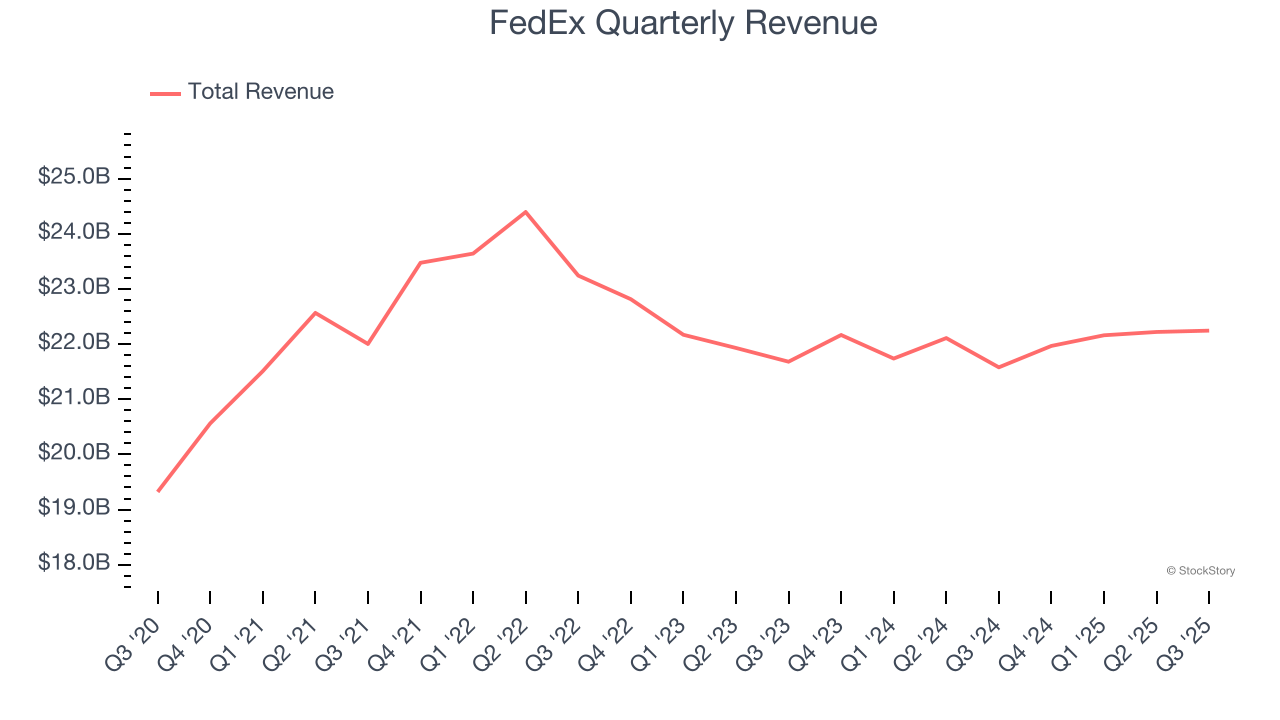
We at StockStory place the most emphasis on long-term growth, but within industrials, a half-decade historical view may miss cycles, industry trends, or a company capitalizing on catalysts such as a new contract win or a successful product line. FedEx’s recent performance shows its demand has slowed as its revenue was flat over the last two years. We also note many other Air Freight and Logistics businesses have faced declining sales because of cyclical headwinds. While FedEx’s growth wasn’t the best, it did do better than its peers. 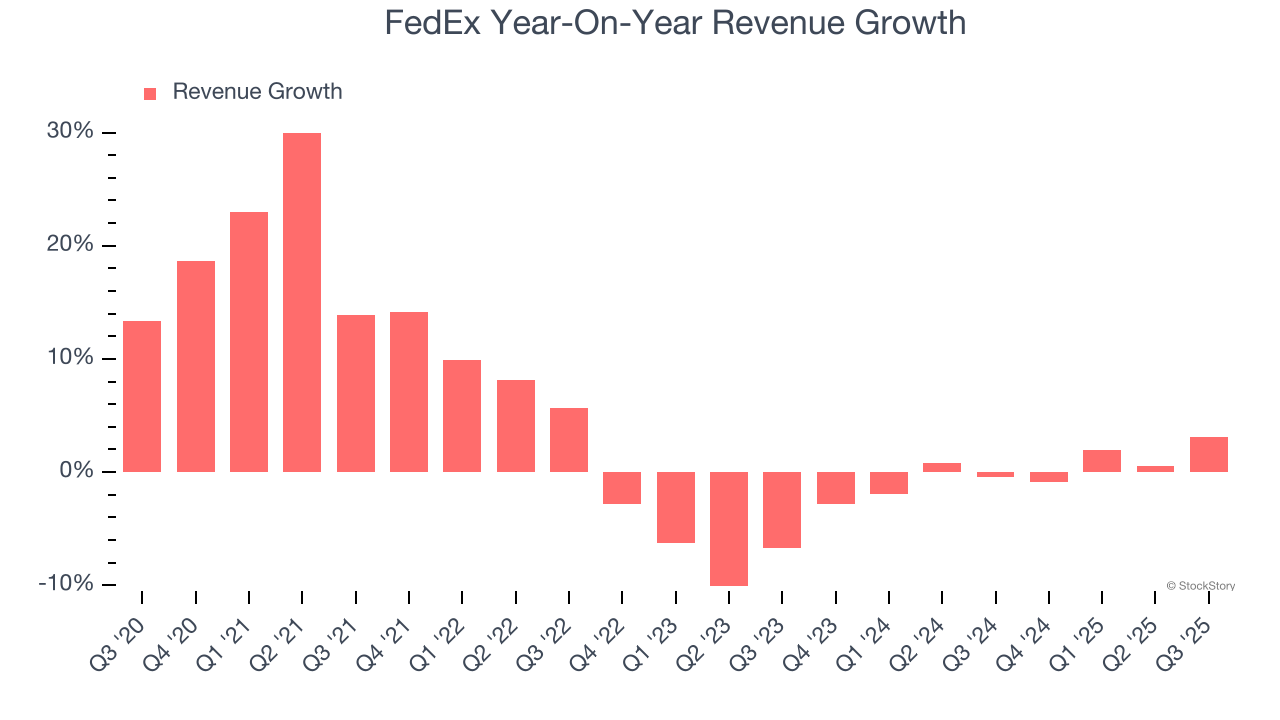
This quarter, FedEx reported modest year-on-year revenue growth of 3.1% but beat Wall Street’s estimates by 2.7%.
Looking ahead, sell-side analysts expect revenue to grow 1.3% over the next 12 months, similar to its two-year rate. Although this projection suggests its newer products and services will spur better top-line performance, it is still below the sector average.
Here at StockStory, we certainly understand the potential of thematic investing. Diverse winners from Microsoft (MSFT) to Alphabet (GOOG), Coca-Cola (KO) to Monster Beverage (MNST) could all have been identified as promising growth stories with a megatrend driving the growth. So, in that spirit, we’ve identified a relatively under-the-radar profitable growth stock benefiting from the rise of AI, available to you FREE via this link.
Operating Margin
FedEx’s operating margin might fluctuated slightly over the last 12 months but has generally stayed the same, averaging 6.1% over the last five years. This profitability was paltry for an industrials business and caused by its suboptimal cost structureand low gross margin.
Looking at the trend in its profitability, FedEx’s operating margin might fluctuated slightly but has generally stayed the same over the last five years. This raises questions about the company’s expense base because its revenue growth should have given it leverage on its fixed costs, resulting in better economies of scale and profitability. FedEx’s performance was poor, but we noticed this is a broad theme as many similar Air Freight and Logistics companies saw their margins fall (along with revenue, as mentioned above) because the cycle turned in the wrong direction.
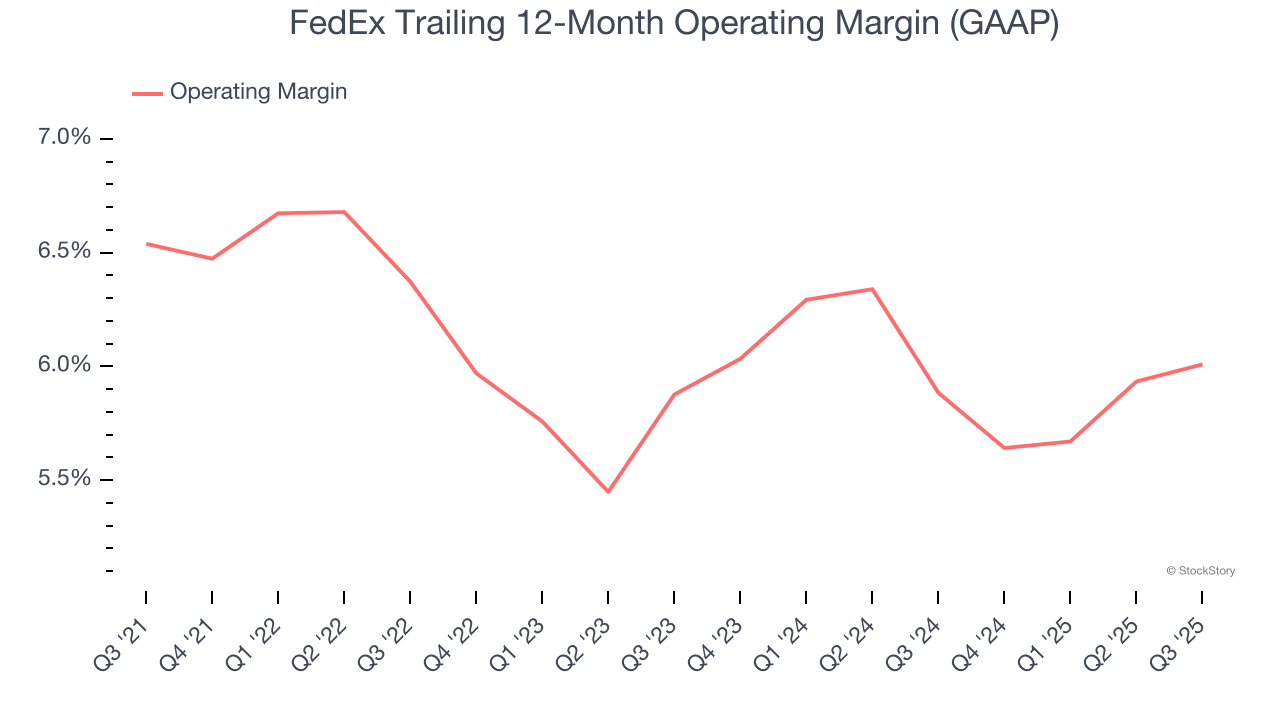
In Q3, FedEx generated an operating margin profit margin of 5.3%, in line with the same quarter last year. This indicates the company’s cost structure has recently been stable.
Earnings Per Share
Revenue trends explain a company’s historical growth, but the long-term change in earnings per share (EPS) points to the profitability of that growth – for example, a company could inflate its sales through excessive spending on advertising and promotions.
FedEx’s EPS grew at a solid 10.3% compounded annual growth rate over the last five years, higher than its 4.4% annualized revenue growth. However, this alone doesn’t tell us much about its business quality because its operating margin didn’t improve.
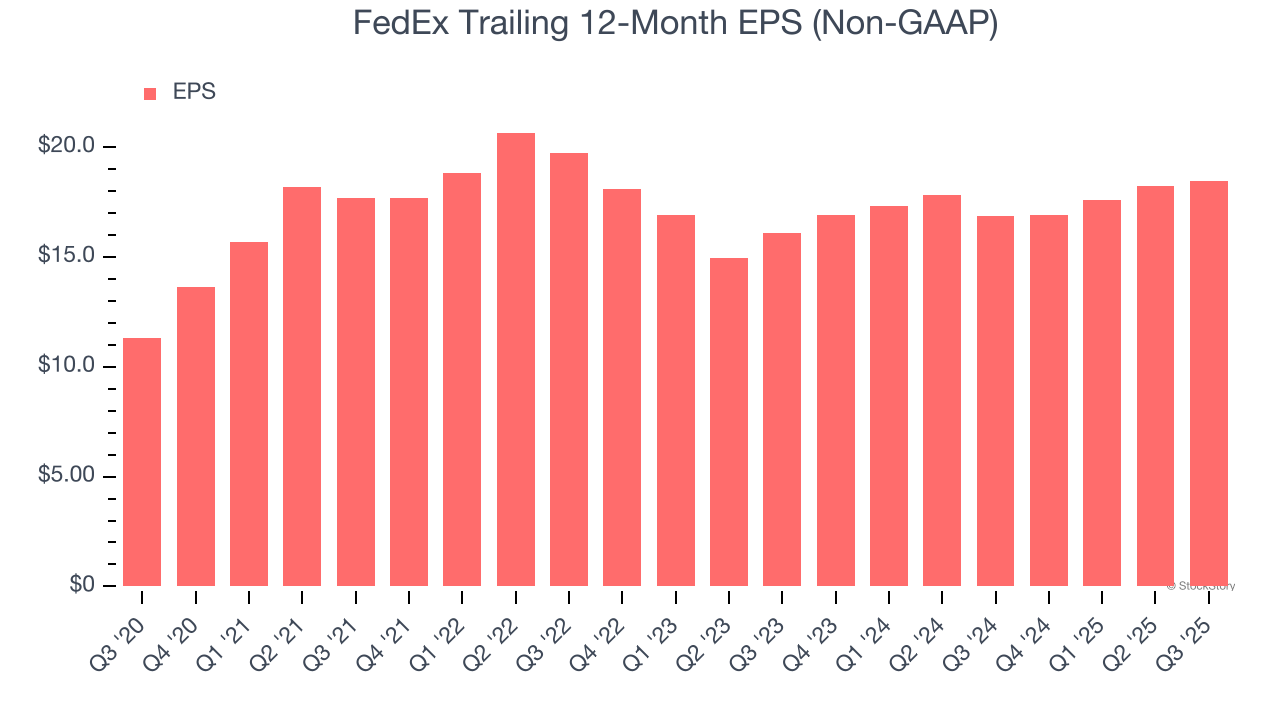
Diving into the nuances of FedEx’s earnings can give us a better understanding of its performance. A five-year view shows that FedEx has repurchased its stock, shrinking its share count by 9.5%. This tells us its EPS outperformed its revenue not because of increased operational efficiency but financial engineering, as buybacks boost per share earnings. 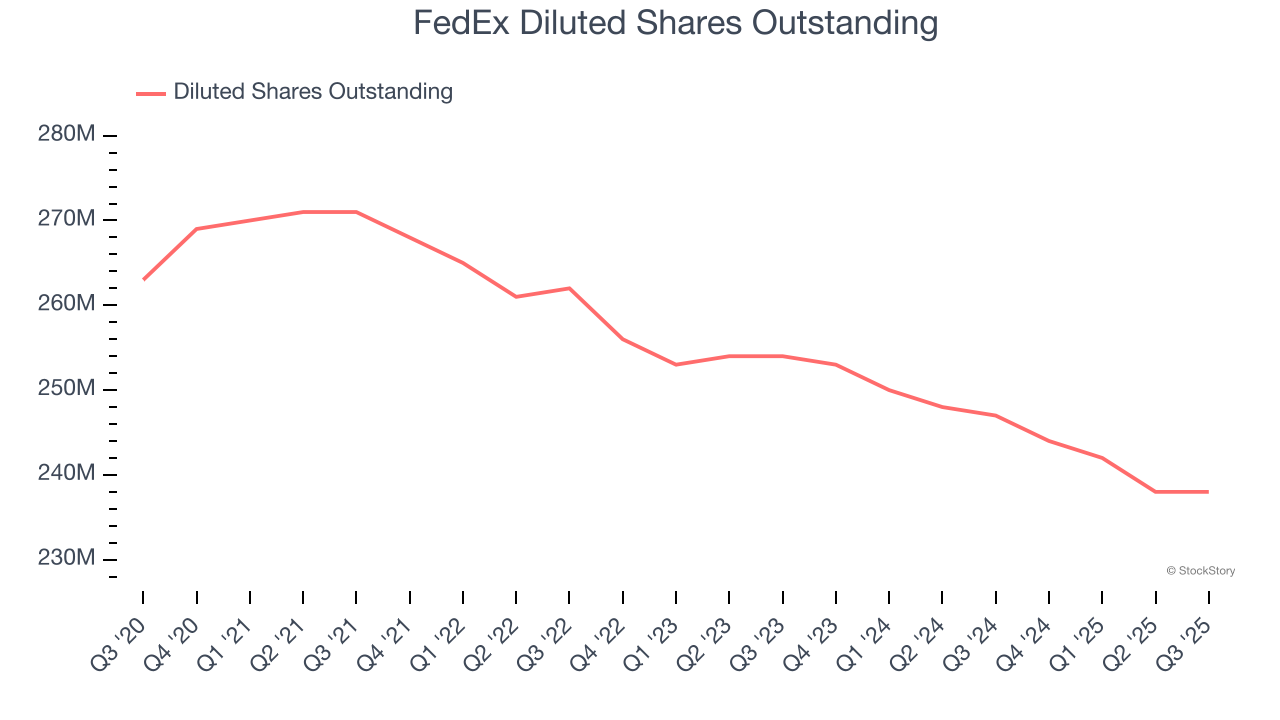
Like with revenue, we analyze EPS over a shorter period to see if we are missing a change in the business.
For FedEx, its two-year annual EPS growth of 7.1% was lower than its five-year trend. We hope its growth can accelerate in the future.
In Q3, FedEx reported adjusted EPS of $3.83, up from $3.60 in the same quarter last year. This print beat analysts’ estimates by 5.8%. Over the next 12 months, Wall Street expects FedEx’s full-year EPS of $18.46 to grow 1.7%.
Key Takeaways from FedEx’s Q3 Results
We enjoyed seeing FedEx beat analysts’ revenue expectations this quarter. We were also glad its EPS outperformed Wall Street’s estimates. On the other hand, its full-year EPS guidance fell slightly short of Wall Street’s estimates. Overall, this print was mixed but still had some key positives. The stock traded up 5.3% to $238.95 immediately following the results.
Should you buy the stock or not? When making that decision, it’s important to consider its valuation, business qualities, as well as what has happened in the latest quarter. We cover that in our actionable full research report which you can read here, it’s free.





